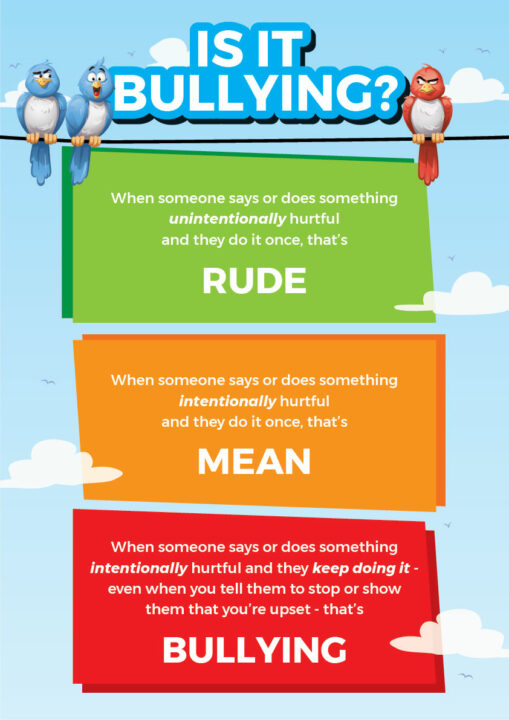Bullying is a serious problem that affects many children and teenagers. It can take many forms, including physical, verbal, and cyberbullying. As a parent, it’s important to be aware of the signs of bullying and to take steps to prevent it from happening to your child.
A definition of bullying
Bullying is unwanted, aggressive behaviour among school aged children that involves a real or perceived power imbalance. The behaviour is repeated, or has the potential to be repeated, over time. Bullying includes actions such as making threats, spreading rumours, attacking someone physically or verbally, and excluding someone from a group on purpose.
Here are some common symptoms that may been seen in a child being bullied.
Behavioural Changes:
Sudden shifts in behaviour can be indicative of bullying. Look out for unexplained mood swings, increased irritability, aggression, or withdrawal from social activities.
Physical Complaints:
Frequent complaints of stomach aches, headaches, or other physical ailments without a clear medical cause could signal the stress and anxiety associated with bullying.
Loss of Interest:
A child who was once enthusiastic about school, hobbies, or activities might suddenly lose interest or show a decline in performance, potentially due to the emotional toll of bullying.
Social Isolation:
If your child abruptly stops spending time with friends or avoids social situations they once enjoyed, it could be a sign that they are being excluded or mistreated.
Changes in Eating or Sleeping Patterns:
Bullying can disrupt a child’s eating and sleeping routines. Look for signs of appetite changes, weight loss or gain, insomnia, or nightmares.
Torn or Damaged Possessions:
If your child’s belongings are frequently damaged or go missing, it might be a form of bullying, especially if they are reluctant to talk about what happened.
Here are some tips to help you recognise and address bullying:
Stay involved in your child’s life:
One of the best ways to prevent bullying is to stay involved in your child’s life. This means talking to them regularly about their day, their friends, and any issues they may be facing. By doing so, you can spot any changes in their behaviour or mood that could indicate they’re being bullied.
Teach your child how to be assertive:
Teaching your child how to be assertive can help them stand up for themselves if they’re being bullied. Encourage them to speak up and say no if someone is being mean to them, and to ask for help from a trusted adult if they need it.
Monitor your child’s online activity:
Cyberbullying is a growing problem, so it’s important to monitor your child’s online activity. Keep an eye on their social media accounts and online interactions to ensure they’re not being targeted by bullies.
Encourage kindness and empathy:
Teaching your child to be kind and empathetic towards others can help prevent bullying. Encourage them to treat others with respect and to stand up for their peers if they see them being bullied.
Take action:
If your child is being bullied, if you suspect your child is being bullied, take action right away. Talk to their teachers or school senior management to address the issue and consider seeking help from a counsellor or therapist if your child is struggling emotionally.
By following these tips, you can help prevent bullying and create a safe and supportive environment for your child.
Remember, if your child is being bullied, it’s important to take action to address the issue and ensure their well-being.





